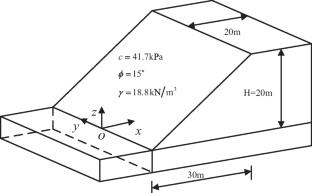A solution for evaluating stability and sliding direction of 3D earthquake landslides
Abstract
Assessing the stability and the determining the critical slip surfaces (CSS) represent two significant endeavors concerning 3D seismic landslides. The minimum potential energy method is applied to evaluate the stability, with specific improvements proposed. Specially, the mobilized shear stress on slip surface is derived through the static equilibrium condition on x-axis direction of the sliding mass. The movement trajectory of a landslide (moving direction) is jointly determined by the forces acting on the sliding mass and is equivalent to the vector sum of these forces. Seismic acceleration is characterized using the pseudo-dynamic method, capturing the temporal and spatial variations in seismic forces. By considering the total potential energy of landslide as the objective function, a novel insight for identifying CSS of seismic-induced landslides is developed. A comparison and analysis show that the relative errors between the safety factor(SF) obtained using the proposed method and limit equilibrium method are less than 3%. Results also indicate that the proposed model can effectively determine the location and shape of CSS against 3D seismic landslides. A real case study shows that the proposed method not only accurately evaluates the stability and location of the slip surface of an actual slope but also yields spatial characteristic parameters of the sliding mass that are close to the measured values. Finally, a sensitivity analysis is conducted on several parameters affecting the stability of seismic-induced landslide.


 求助内容:
求助内容: 应助结果提醒方式:
应助结果提醒方式:


